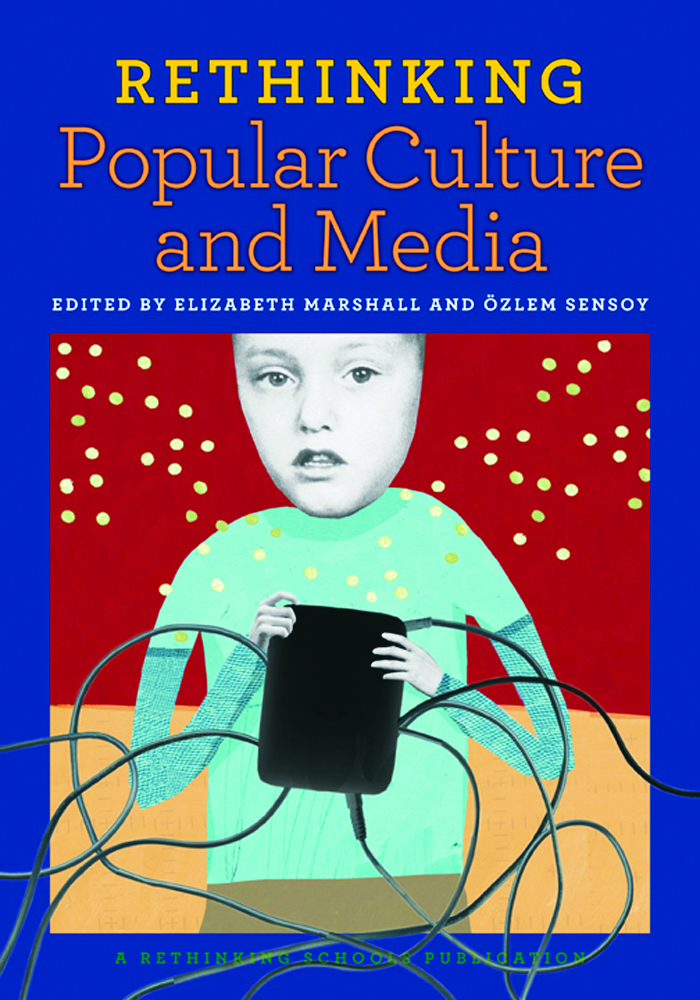by Elizabeth Marshall

From movies such as Blackboard Jungle and Freedom Writers to televisions shows like Degrassi: The Next Generation and The Wire, teachers and students are regular subjects of film and television.
November 7-11 marks Media Literacy Week in Canada, and it affords educators—Canadian as well as those south of the border—the opportunity to ask the question: What sorts of pop culture stories are told about teachers, and how do these fictional stories matter in the real world?
In our recent book, Rethinking Popular Culture and Media, authors critically engage with numerous representations of teachers in television and film. It is clear that a number of stereotypes about teachers are consistently reproduced in mainstream North American popular culture. What is at stake in popular representations of us as teachers? Let’s begin with a focus on two familiar characters, the “Savior” and the “Burnout.”
The Savior: This character appears in numerous “urban” movies. S/he is usually White and seeks to save students of Color in under-resourced schools. In Rethinking Popular Culture and Media, Chela Delgado analyzes these representations for readers in her piece, “Freedom Writers: White Teacher to the Rescue.” In Freedom Writers and other scripts like it, one teacher saves the students—not through structural change, but through individual pluck. Delgado suggests a different kind of plot. She writes: “I want a teacher movie where there aren’t cardboard heroes and villains, but a genuine analysis of how race and class play out in schools” (p. 226).
The Burnout: This teacher has worked in the schools for too many years. The following clip of the economics teacher from the 1986 movie Ferris Bueller’s Day Off is a good example of the teacher who continues to try, if ineptly, to impart information to disengaged students.
Some might argue that representations of teachers in popular culture are just entertainment; however, these images and storylines all have real life implications. For instance, the consistent use of the savior-teacher-who-saves-students-one-classroom-at-a-time continues the myth of the individual teacher and teacher education as the main problem with schools, rather than structural issues such as poverty. Images of the burnout-teacher, who teaches the same lesson year after year in a coma-inducing tone, and has a “job for life,” like the economics teacher in Ferris Bueller, help sustain the fiction that tenure is the problem with schools (Not Waiting for Superman; Wisconsin). These representations then lay the foundation for films like Waiting for Superman, which have an explicit ideological agenda that is bolstered by both the Savior and the Burnout myth.
All of these representations are caricatures meant to distort, and therefore deflect, the real challenges teachers face. However, as the contributors to Rethinking Popular Culture and Media demonstrate, we can promote alternative representations of teachers that frame educational issues in different and more complex ways. In her chapter, “More Than Just Dance Lessons,” Terry Burant analyzes how the documentary Mad Hot Ballroom raises for educators a number of important questions about teaching that challenges the familiar teacher-as-savior storyline, such as “How can we change the face of teaching to reflect a more diverse nation?” Similarly, in Gregory Michie’s piece “City Teaching, Beyond the Stereotypes,” he points out how a film like Half Nelson complicates teacher-hero movies, and how a documentary such as The First Year moves away from “grand or symbolic gestures” in favor of “steady, purposeful efforts to make the curriculum more meaningful, the classroom community more affirming, and the school more attuned to issues of equity and justice” (p. 233).
Too often educators focus on critiquing children’s popular cultural texts as somehow separate from that of adults when in reality, television and film cross over between audiences and share familiar images and storylines. Educators can and should use Media Literacy Week as an invitation to improve our own digital citizenship, to use technologies to resist and rewrite representations of teachers as saviors and burnouts, as well as any other number of stereotypes, in popular culture and in mainstream media.
Analyzing representations of teachers and teaching is important and necessary work. As the writers in Rethinking Popular Culture and Media suggest, thinking critically about how educators are represented is the first step for repositioning ourselves “from cogs in the machine to social actors intent on resisting and/or rewriting the status quo” (p. 11). In this way, critical media literacy is not just for youth.
Classroom Resource for Analyzing Teacher Stereotypes
Media Awareness Network, a sponsor of Media Literacy Week, has a unit of study for grades 6-8 entitled “Images of Learning” through which educators and students can undertake a critical media literacy analysis of how teachers and youth are represented in television and film. Readers can access it here.
—————
Elizabeth Marshall, Ph.D. teaches in the Faculty of Education at Simon Fraser University in Vancouver Canada, where she researches children’s and young adult literature and popular culture. She is co-editor with Özlem Sensoy on Rethinking Popular Culture and Media. Her work has appeared in numerous academic journals, including the Harvard Educational Review, Reading Research Quarterly, Gender & Education, Discourse: Studies in the Cultural Politics of Education, and The Lion and The Unicorn.
This post represents the views of the author, and not necessarily those of Rethinking Schools.
